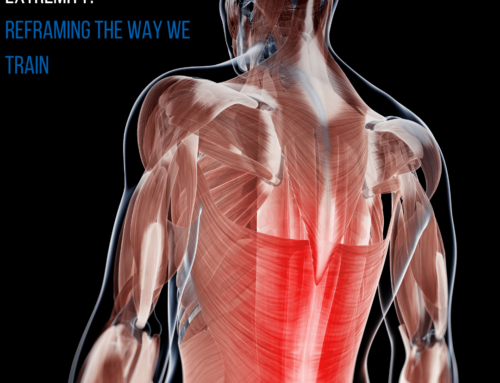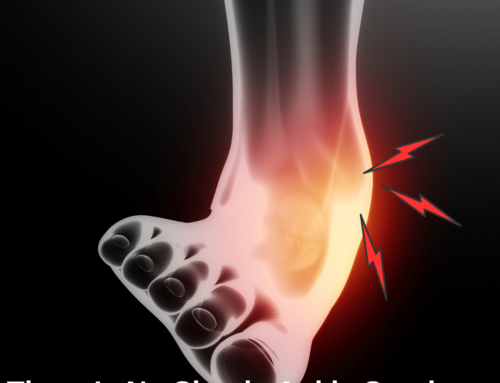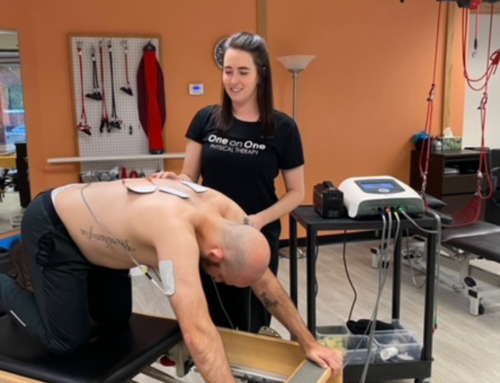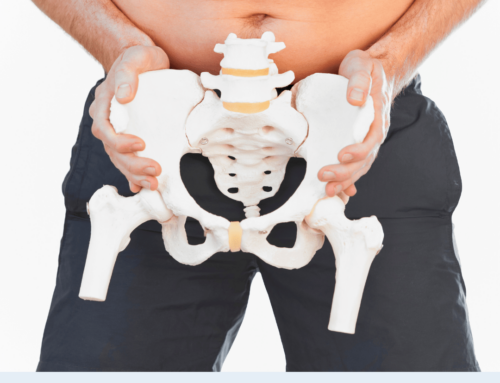5 Ways Physical Therapists Treat Pain

Are you familiar with the current ways Physical Therapist’s treat pain? Pain is a complex warning signal that suggests something is or may be wrong in the body. The problem is that pain is often a result of a variety of inputs from the body, so it may require a variety of treatment interventions to improve it. Physical Therapists (PTs) are trained in many of these interventions to help manage and treat pain. Here are some of the latest interventions that PTs utilize to treat pain.
Dry Needling
Dry Needling decreases pain caused by myofascial trigger points, which cause acute and chronic pain. Trigger points are taut bands located within contractured muscle fibers that can cause pain. These trigger points cause decreased blood flow to the area, a build-up of acid, localized inflammation, and inadequate muscle activation. When a PT performs dry needling, it turns off the hyperactive spinal cord reflex allowing the trigger point to release. When this release occurs, blood is able to flow into that region to supply oxygen to breakdown the acid build-up and to flush out inflammation helping restore normal movement. We often follow dry needling with exercise that resets the nerve and muscle function to a normal level. A good analogy for this process is the re-booting of a computer that isn’t working properly. First the computer is powered off (Dry Needling) and then it reboots (exercise) in order to reset the circuitry.
Manual Therapy
Joint Mobilization is used to relieve painful, stiff joints. When someone has joint pain, often there are underlying imbalances within the body that cause joints to lose the ability to glide properly. This can lead to sharp pain and swelling around and within a joint. A skilled PT can mobilize a joint to allow for more pain-free motion and allow the person to move more normally.
Muscle Energy Techniques involve positioning a patient to localize motion in a joint, applying a manual force to control the joint and guiding the patient to apply various forces against resistance. This combination of forces between the patient and the therapist restores the joint to a more balanced position and helps to promote normalized joint motion and muscular function in that area. This treatment results in improved motion with decreased pain.
Education & Stress Management
Education and Stress Management is paramount when treating a person dealing with persistent or chronic pain. It is important to understand that stress, thoughts and emotions can be significant factors influencing pain. When appropriate, a physical therapist’s education to a patient can decrease fear and anxiety about damaging body parts with motion and function. This can often reduce the central nervous system’s influence on pain.
Redcord Suspension Training
Neuromuscular Re-education using Redcord Suspension Training is a highly effective method that helps people resolve pain and re-establish muscle activation. This approach typically combines the use of several muscle groups that work together in a particular pattern allowing normal function. If these movements patterns are disrupted, they can cause pain within your muscles and/or joints.
Redcord is unique because you exercise while suspended in ropes and bungee cords, which facilitates muscle activation. Studies have shown that injury, pain and inactivity disturb our brain’s capacity to switch on the right muscles at the right time and with the right amount of strength. This loss of neuromuscular function diminishes our “local” muscle control, often leading to decreased quality of movement and increased musculoskeletal pain causing our larger “global” muscles to take over and compensate, and eventually become stressed, strained and painful. Redcord aims to activate the synergistic muscle groups without pain or compensation. By using Redcord, you can quickly re-establish normal muscular patterning, improve motion and decrease pain in less time than conventional treatment methods.
Visceral Manipulation
For an organ to be healthy and have optimal function, there needs to be motion around the organ and the surrounding connective tissue. Connective tissue loses their normal motion when they become inflamed or they are cut on from surgery, which impacts the organ mobility and motility. Many factors can cause tissue inflammation including: infections, direct trauma, repetitive motion, diet, environmental toxins, emotional stress. Visceral Manipulation is a manual therapy consisting of gentle, specifically placed manual forces that encourage normal mobility of the viscera (organs) and the surrounding connective tissues where physiologic motion has been impaired. This is not voodoo, we promise! Physical Therapists trained in Visceral Manipulation are able to evaluate organ motion and the motion of the surrounding tissue and integrate this technique into your specific treatment plan.
Experience The Difference
The PTs at One on One Physical Therapy are committed to delivering the highest level of skill with the interventions mentioned above. Our treatment plans are customized to the individual in order to facilitate the restoration of meaningful function. As we all seek a better quality of life, there are times when we need help. We are dedicated to this betterment and helping patients to decrease pain is an integral part of how we do that at One on One Physical Therapy. Come experience the difference.
Lance Cross is a Board Certified Orthopaedic Physical Therapist at One on One Physical Therapy. Lance offers 20 years of experience with treatment interventions that include Dry Needling, Redcord & The Neurac Method, and Pilates for Rehabilitation. His particular background in the pain sciences includes clinical treatment of chronic pain patients, lecturing and involvement in clinical trials. He is a Certified Sports Metrics Trainer and has particular involvement in knee injury prevention program development. He enjoys cycling in all disciplines and is frequently found cyclocross racing or mountain-biking with his wife and friends in the mountains. Lance offers free consultations at One on One Physical Therapy. You can email Lance at lance@onetherapy.com. To learn more, visit www.onetherapy.com.
Dr. Melissa Baudo Marchetti is a Board Certified Sports Clinical Specialist at One on One Physical Therapy, a multidisciplinary private practice in Atlanta. For nearly five years she was a full-time sports physiotherapist for the WTA Tour and is a tennis medicine and sports medicine expert. She teaches a Sports Physical Therapy course and assists in teaching orthopedics within the Division of Physical Therapy at Emory University.






